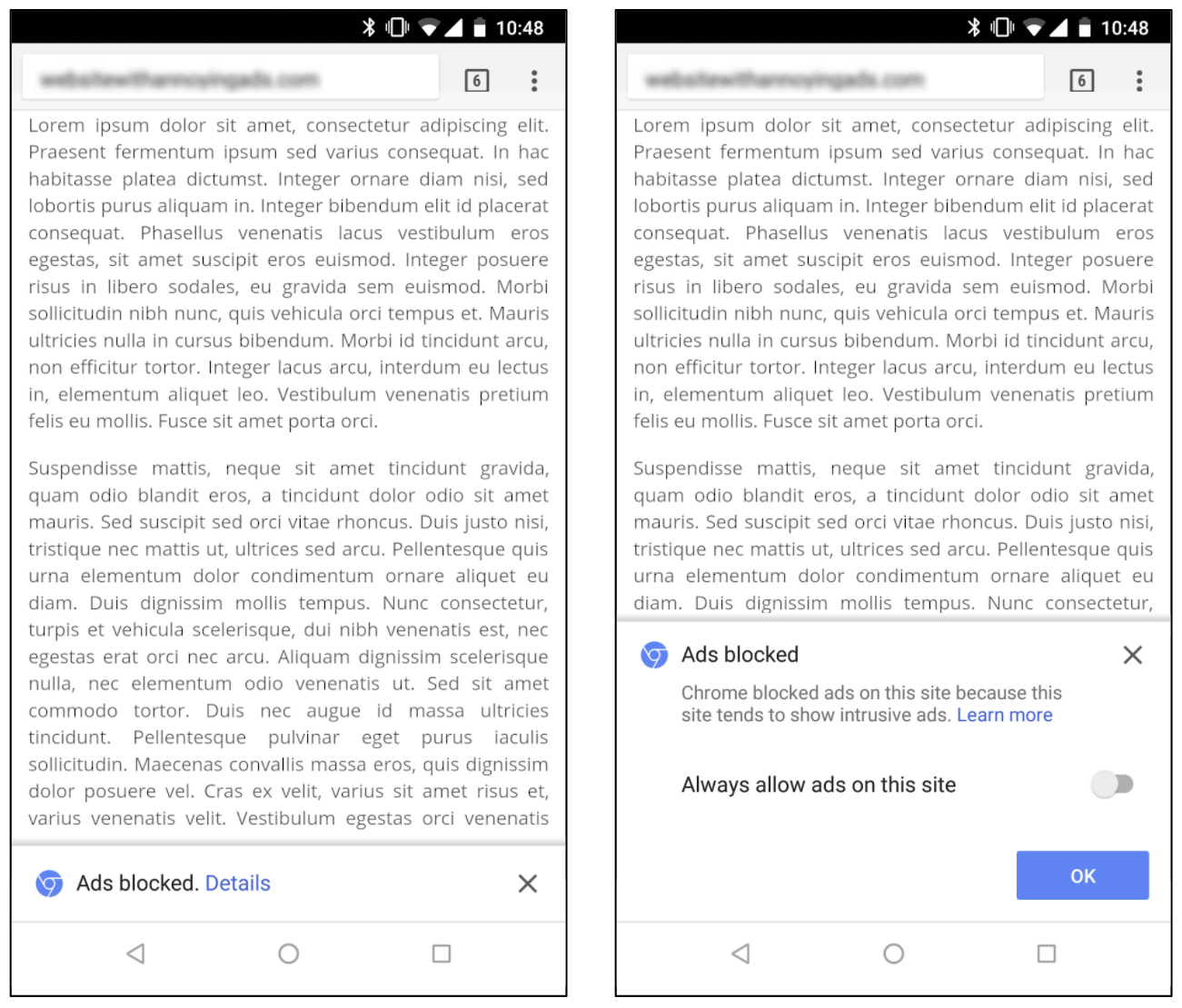Chrome's New Ad Blocker: Here's How It Works
Google's going to filter out ads that it claims to ruin the web browsing experience. Here's how it works and what devices will get it.
On Feb. 15, Chrome users will start saying goodbye to bad ads. And you won't even have to lift a finger.

In a blog post today (Feb. 14), Google spelled out the rules for its Better Ads Standards policy, which will block ads ruled as especially "intrusive." These include autoplaying video ads that include sound, large sticky ads that take over the lower-third of the screen, and ads that blanket the entire screen and require users sit through a countdown process.
In total, the Better Ads Standards will be used to filter out a total of 12 "particularly annoying" types of ads, which also include the ads that fill your screen as you scroll over them on a phone, flashing animated ads and mobile ads that take up more than 30 percent of your screen.
How It Works
But how will you know if ads are getting blocked? On the desktop, a notification will appear in the Chrome address bar, bearing a similarity to the message you recieve when Chrome blocks a pop-up window. Android users will instead see an "Ads blocked." message on the bottom of their screen, which can be tapped to access a toggle that enables the ads.

Google confirmed to Laptop Mag that the feature will not make it to iPhones, and only land on devices running "Android, Windows, Mac, Linux, and Chrome OS." This is likely because Apple requires web browsers on iOS to use their own rendering engine.
Google is informing sites whose ads violate the rules, and made a tool available for site owners to check for compliance. If a site has failed to remove the non-compliant ads within 30 days of Google flagging it for being problematic, Chrome will begin blocking its ads.

To block the ads, the filters in Chrome will first check to see if a site is on the list of those violating the Better Ads standards. If that is the case, Chrome will then block the page from loading requests at the network-level, to prevent them from loading at all.
Get instant access to breaking news, the hottest reviews, great deals and helpful tips.
According to Google, this new tool is already having an impact on the web. The search and browsing giant claims that 42 percent of the sites that originally featured ads that would get filtered out have "resolved their issues and are now passing."
This story originally appeared on Laptop Mag.

Henry was a managing editor at Tom’s Guide covering streaming media, laptops and all things Apple, reviewing devices and services for the past seven years. Prior to joining Tom's Guide, he reviewed software and hardware for TechRadar Pro, and interviewed artists for Patek Philippe International Magazine. He's also covered the wild world of professional wrestling for Cageside Seats, interviewing athletes and other industry veterans.
-
nduke Well poo! I was so excited to see an ad blocker for Chrome... but this is just an ad filter, like Facebook. I get so many spam ads on Facebook I have stopped using it. Especially because they *look* like a friend's post until you look closer. I don't like anything *predicting* what I may or may not like. Gonna stick with ABP.Reply
